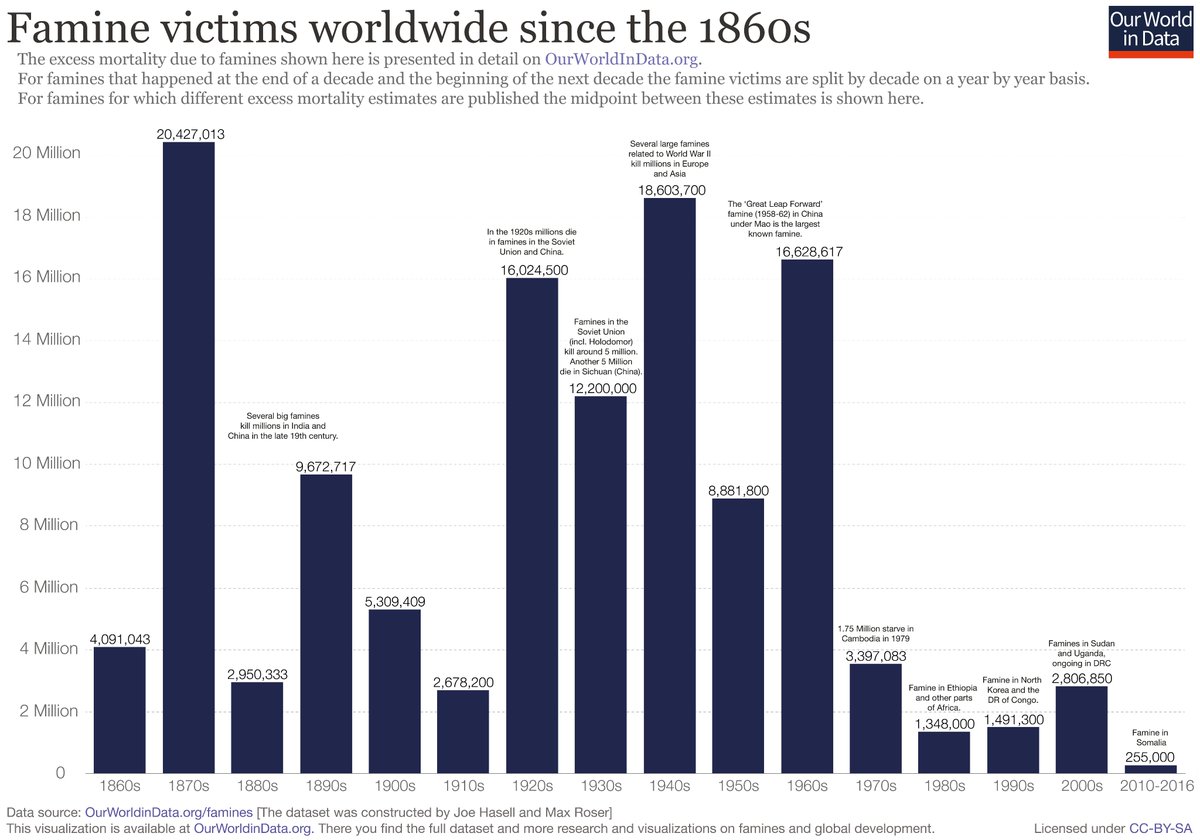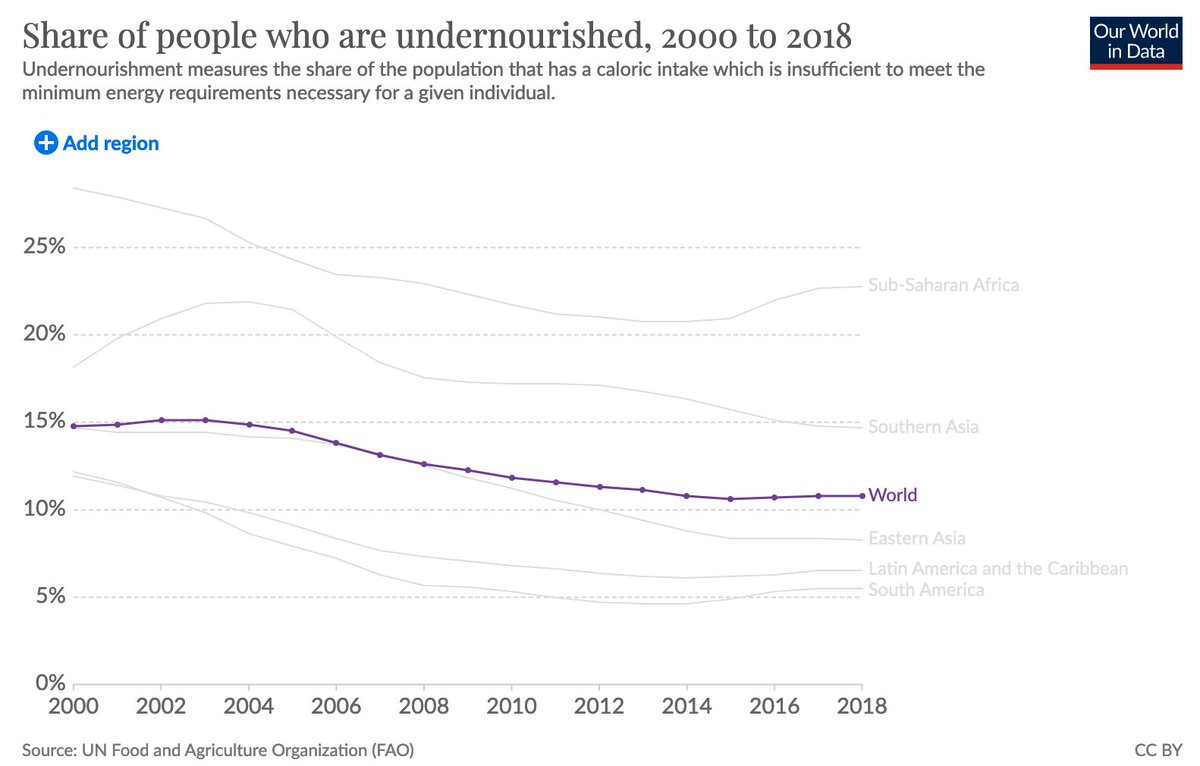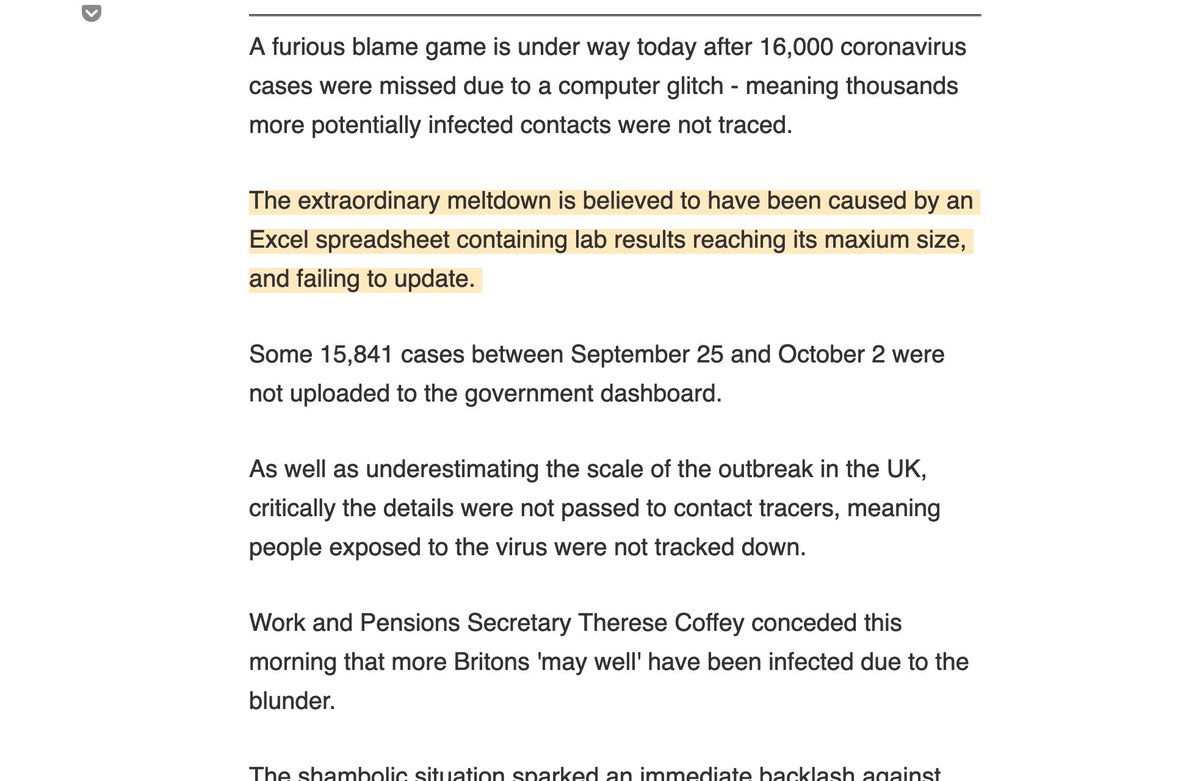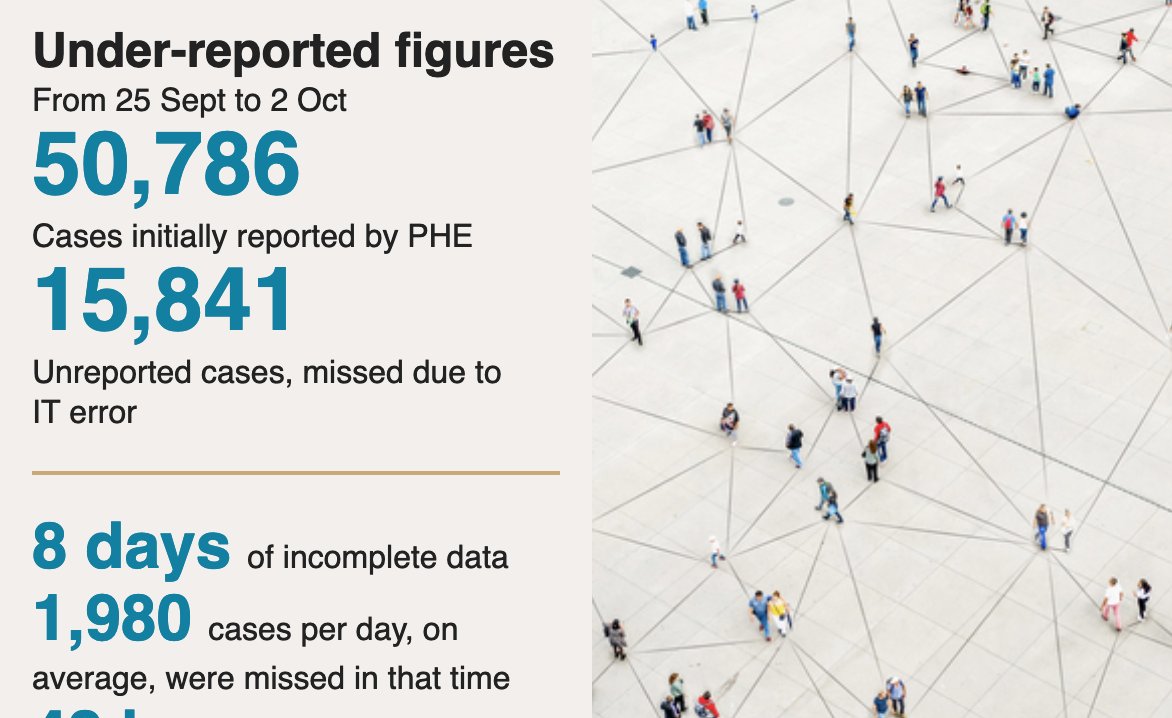
The rise of confirmed cases in Europe is very rapid.
– This is showing the 7-day rolling average. Over the last week 138,500 cases were confirmed every day.
– The doubling time of confirmed cases for Europe as a whole is two weeks.
[interactive source ourworldindata.org/coronavirus-da…]
– This is showing the 7-day rolling average. Over the last week 138,500 cases were confirmed every day.
– The doubling time of confirmed cases for Europe as a whole is two weeks.
[interactive source ourworldindata.org/coronavirus-da…]

But as always, confirmed cases are only a fraction of total cases.
And testing has become worse in the last weeks – the positive rates have increased in many European countries – so that the true doubling rate is likely quite a bit faster.
[source ourworldindata.org/coronavirus-da…]
And testing has become worse in the last weeks – the positive rates have increased in many European countries – so that the true doubling rate is likely quite a bit faster.
[source ourworldindata.org/coronavirus-da…]

And across European countries that differences are large.
Belgium & the Czech Republic report more than 700 cases per million every day.
On the other hand Estonia & Norway report fewer than 30 per million. Testing there is better so that the true difference is likely larger.

Belgium & the Czech Republic report more than 700 cases per million every day.
On the other hand Estonia & Norway report fewer than 30 per million. Testing there is better so that the true difference is likely larger.
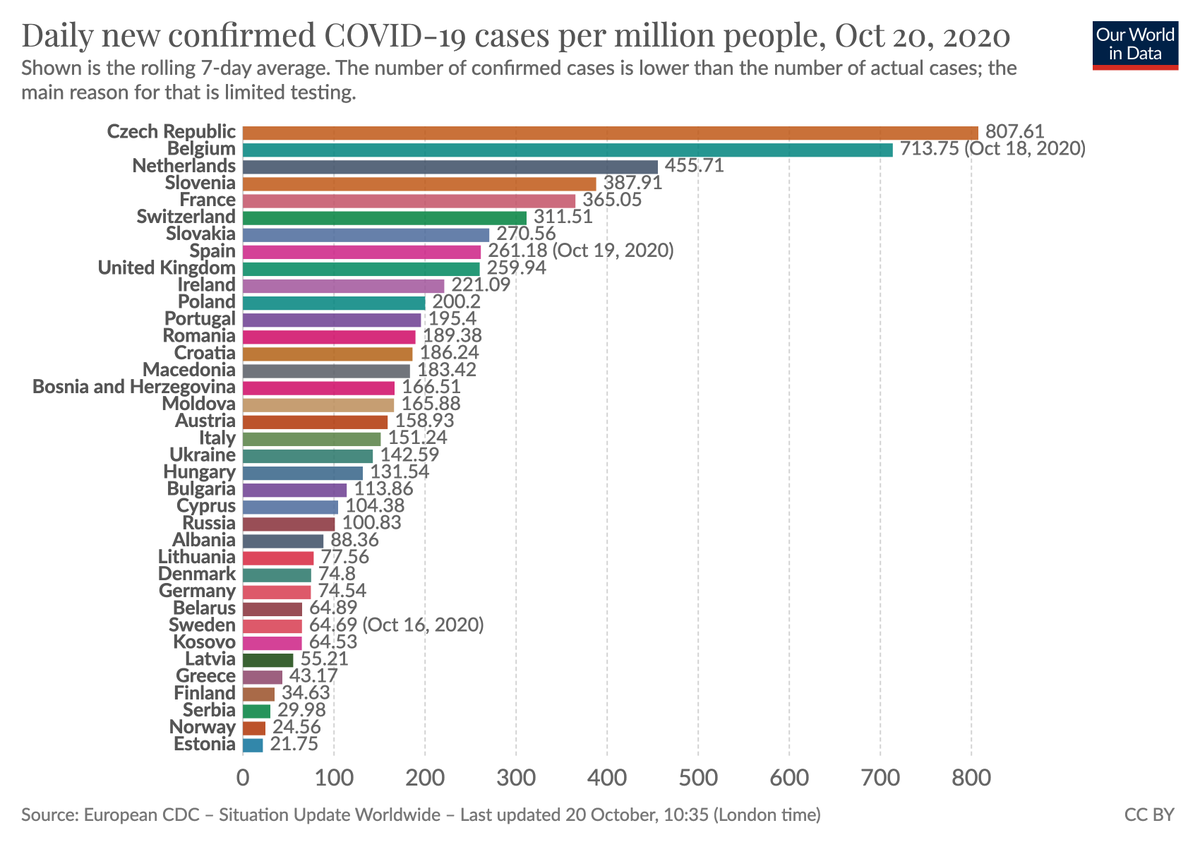
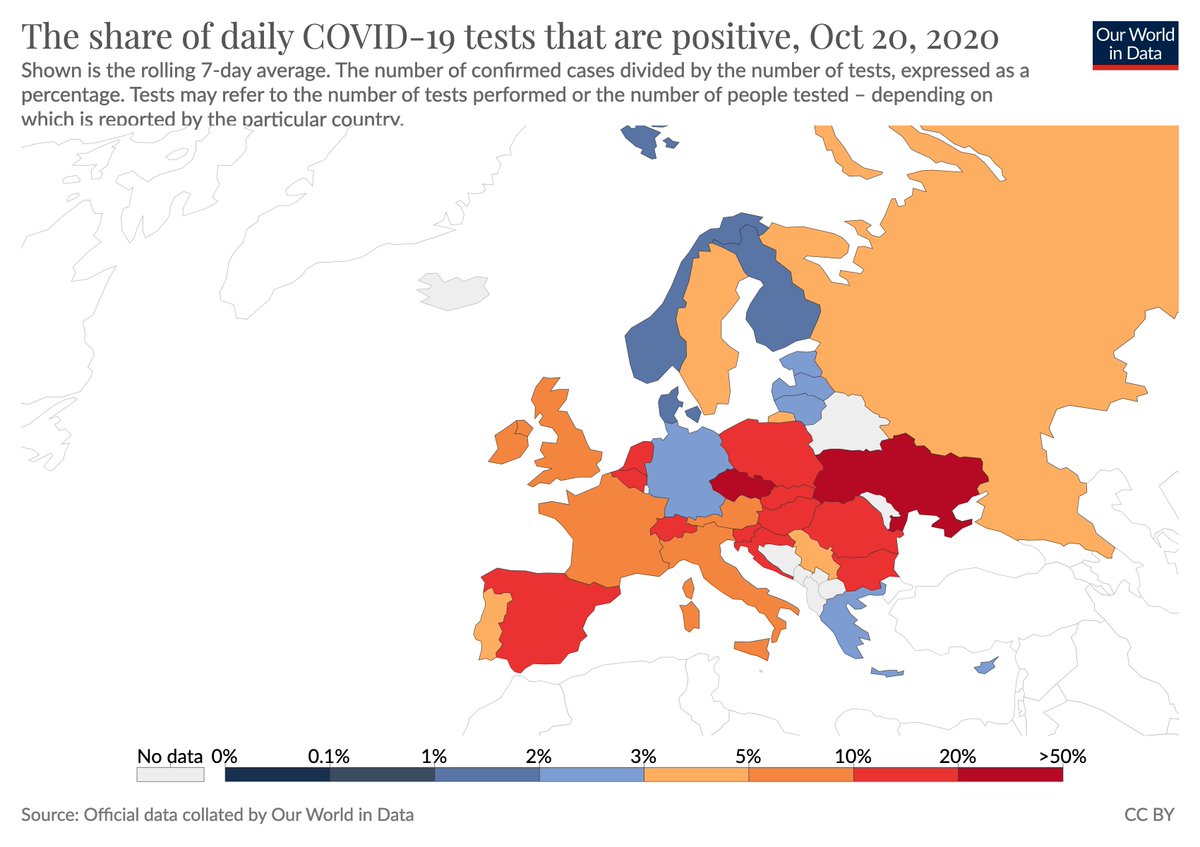
The daily rates for new confirmed cases in Belgium and the Czech Republic are exceptionally fast.
Rates over 700 per million have almost never been seen anywhere until now.
And testing in both countries is poor, the positive-rate in Belgium is 14% and in the Czech Republic 26%.
Rates over 700 per million have almost never been seen anywhere until now.
And testing in both countries is poor, the positive-rate in Belgium is 14% and in the Czech Republic 26%.
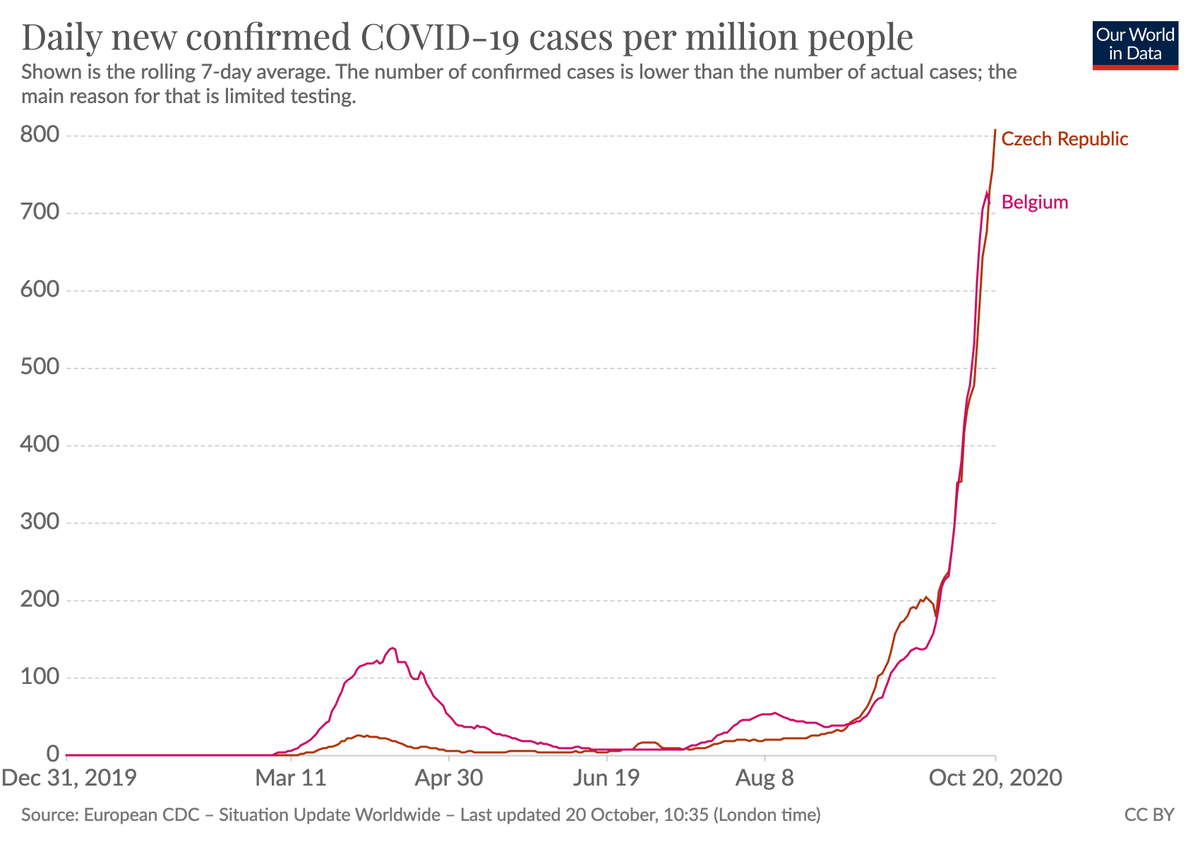
To compare the first and the second wave it makes sense to look at hospitalizations. But keep in mind that this is a lagging indicator.
The number of people in hospital in the UK is currently almost at a third of the spring-peak.
coronavirus.data.gov.uk/healthcare
The number of people in hospital in the UK is currently almost at a third of the spring-peak.
coronavirus.data.gov.uk/healthcare

In the Czech Republic the number of hospitalizations with lab-confirmed cases is much higher now than in the spring.
The latest data shows 3721 hospitalizations, while the spring-peak was 422.
[Health ministry of the Czech Republic onemocneni-aktualne.mzcr.cz/covid-19/prehl…]
The latest data shows 3721 hospitalizations, while the spring-peak was 422.
[Health ministry of the Czech Republic onemocneni-aktualne.mzcr.cz/covid-19/prehl…]
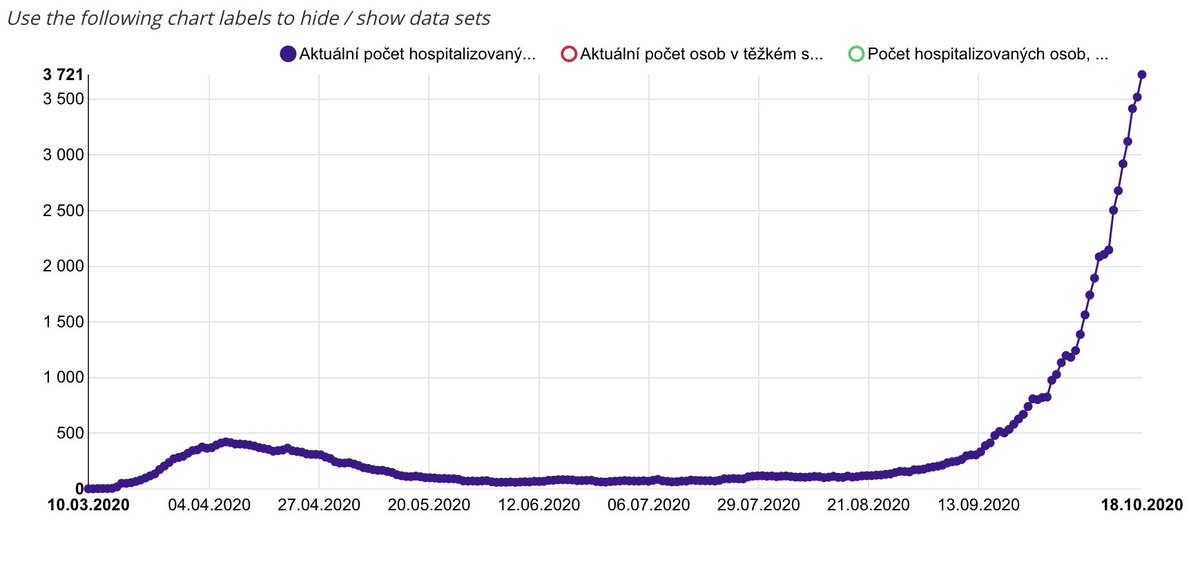
This shows the death rate in Europe. It is currently at a bit more than a quarter of the spring-peak.
(But deaths are of course lagging cases and hospitalizations.)
(But deaths are of course lagging cases and hospitalizations.)
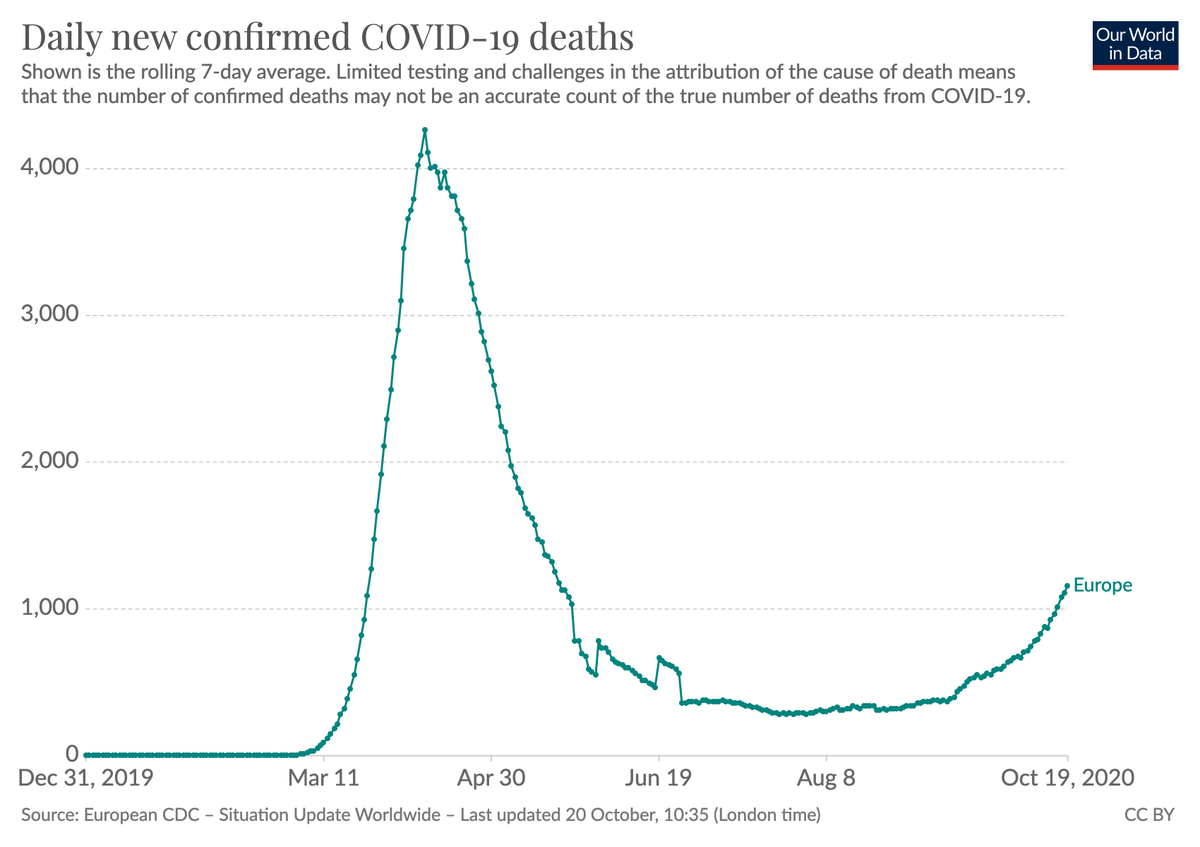
And also worth keeping in mind that the spring-peak is a terrible reference point – doing better than in the spring doesn’t mean we are doing ‘well', the situation in the spring was a nightmare.
And these are the current death rates across Europe.
Again, a huge inequality between places: the Czech Republic at the top and Estonia and Cyprus without any deaths in the last week.
[source ourworldindata.org/coronavirus-da…]
Again, a huge inequality between places: the Czech Republic at the top and Estonia and Cyprus without any deaths in the last week.
[source ourworldindata.org/coronavirus-da…]
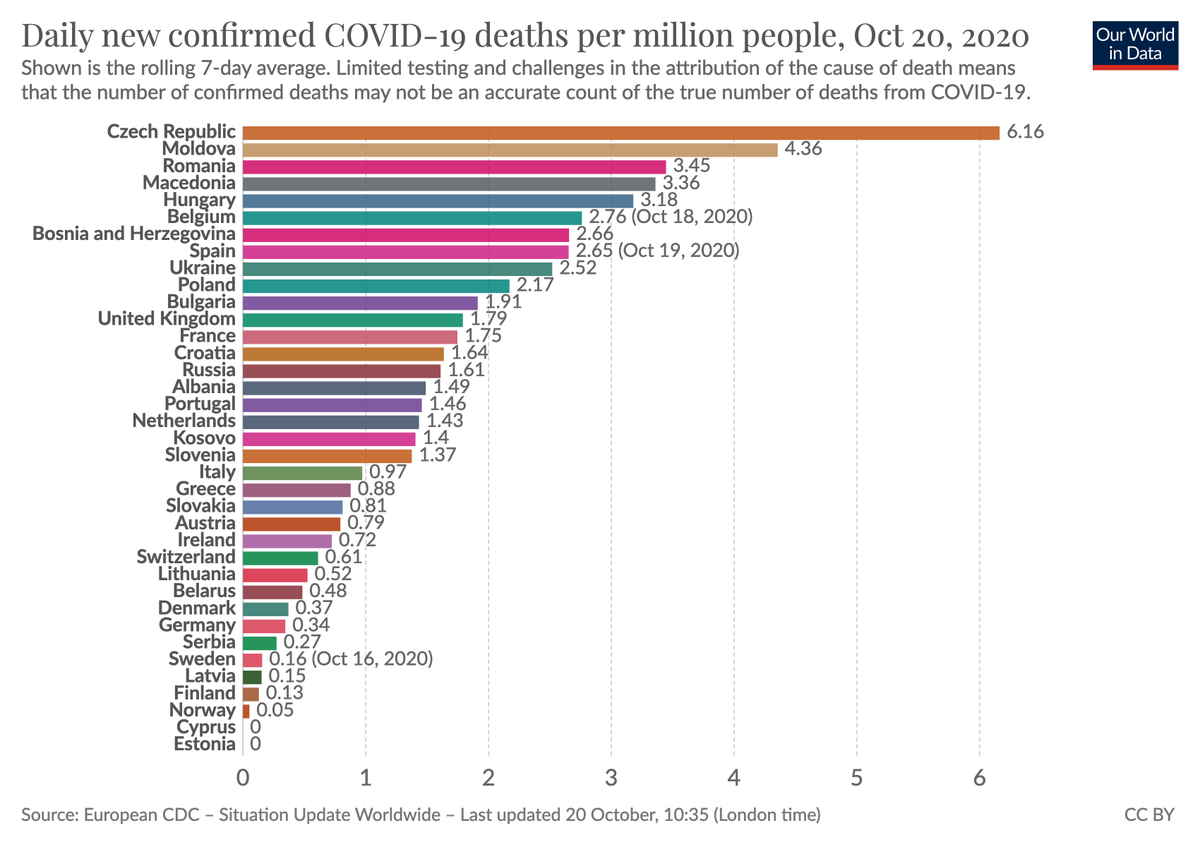
Estonia has overall done very well. They saw outbreaks but were then able to turn them around quickly.
They are also one of the few European countries that currently see cases falling.
[source ourworldindata.org/coronavirus-da…]
They are also one of the few European countries that currently see cases falling.
[source ourworldindata.org/coronavirus-da…]

Estonia also tested widely. They monitored the outbreak well and as a consequence their positive rate stayed low.
[source ourworldindata.org/coronavirus-da…]
[source ourworldindata.org/coronavirus-da…]

And the death count also stayed low in Estonia. After deaths in the spring the small country was able to largely avoid any additional deaths: since mid-May only 4 people died from COVID-19 in Estonia.
[source: ourworldindata.org/coronavirus-da…]
[source: ourworldindata.org/coronavirus-da…]

And since the start of this pandemic Estonia has done an outstanding job in reporting the relevant COVID-19 data, very transparent very detailed: koroonakaart.ee/en
Maybe it's not a coincidence?
Maybe it's not a coincidence?
• • •
Missing some Tweet in this thread? You can try to
force a refresh





